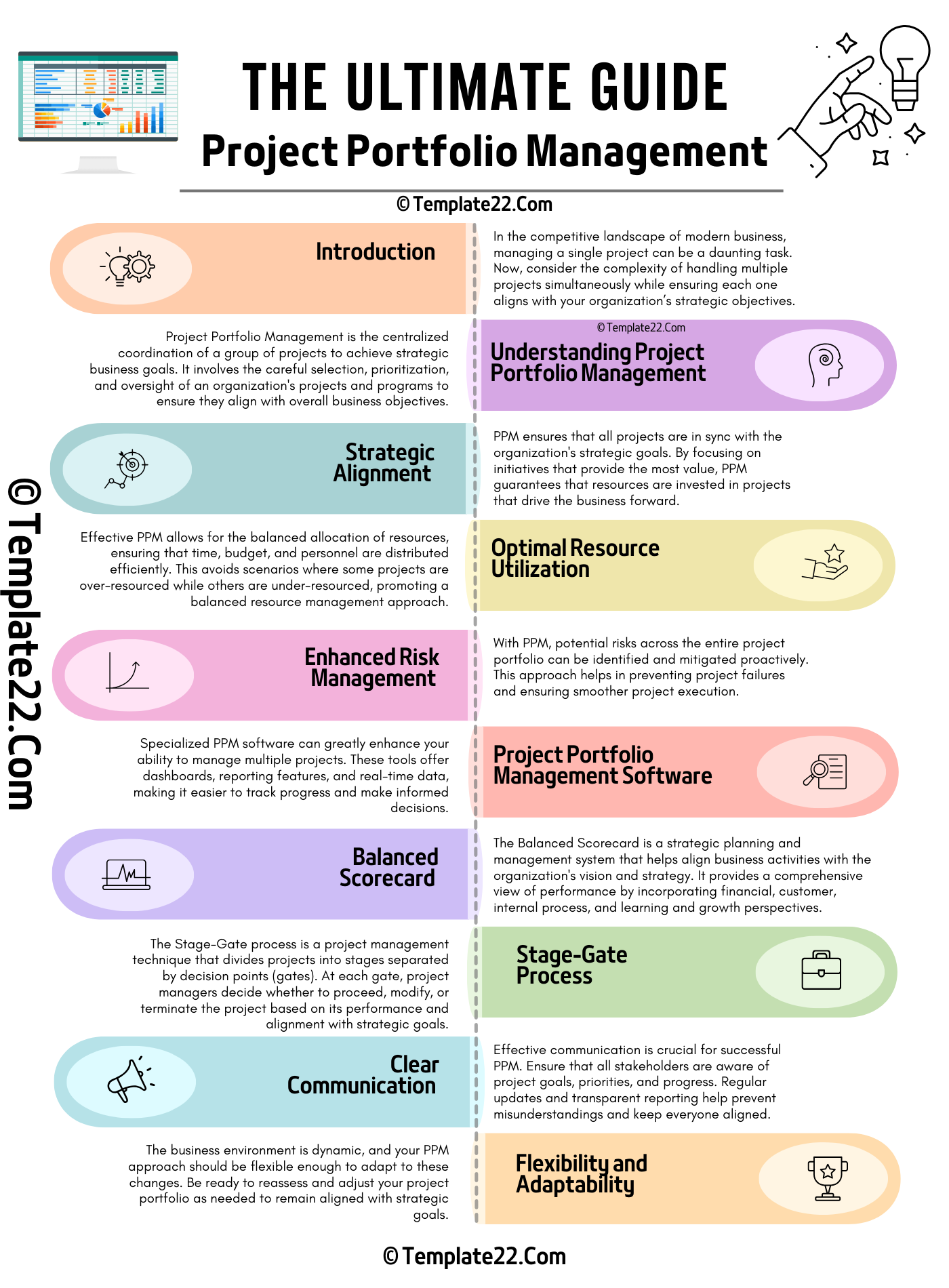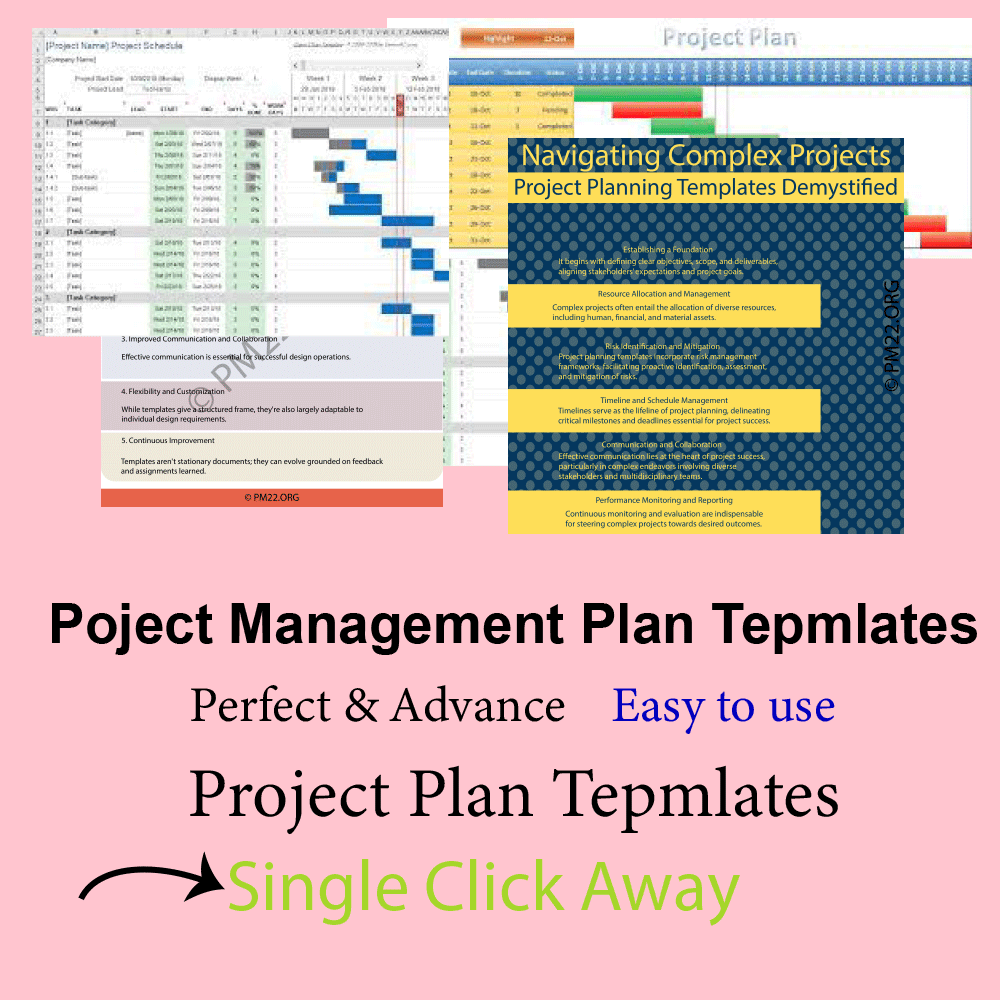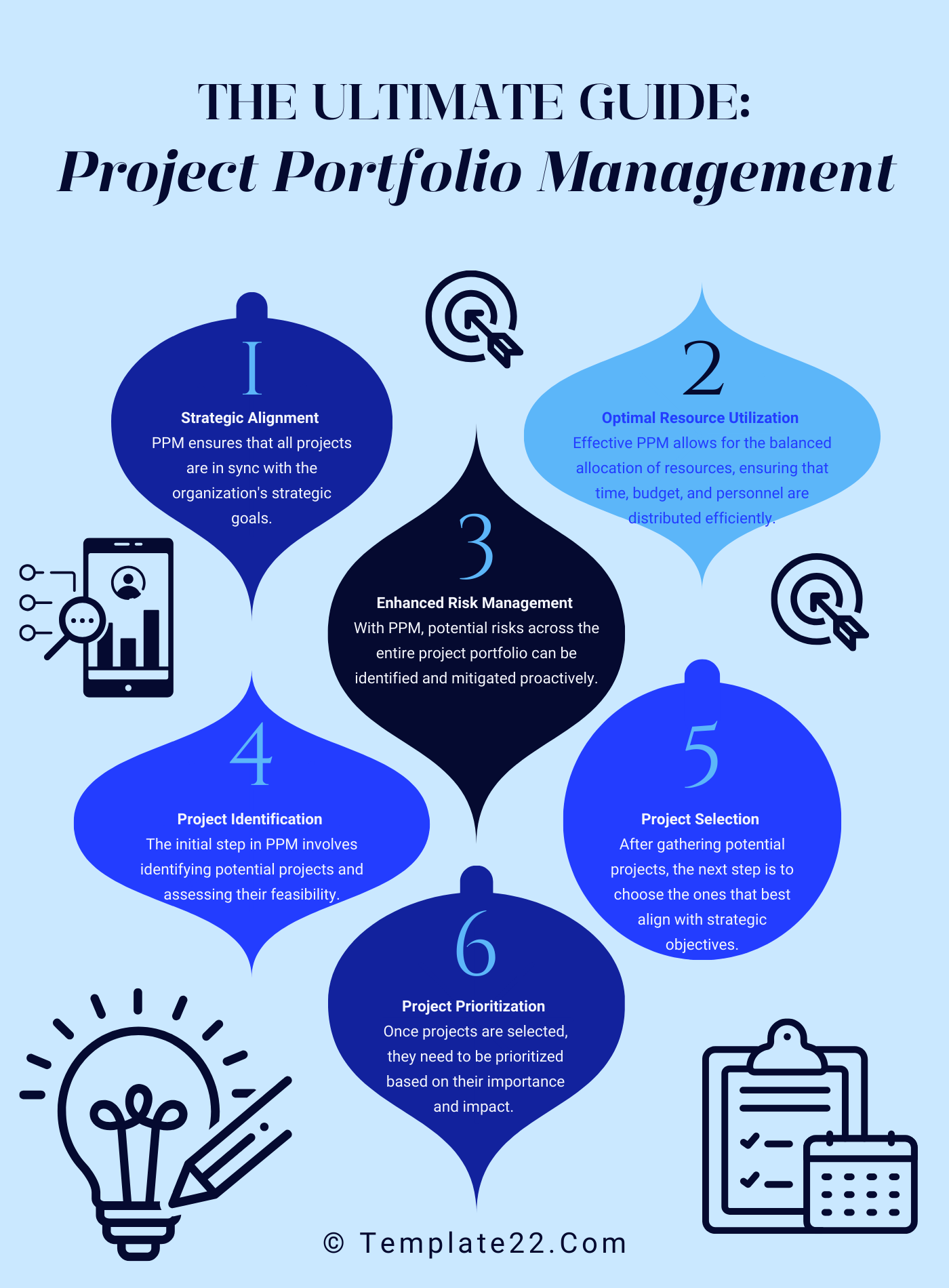 Introduction of Project Portfolio Management
Introduction of Project Portfolio Management
In the competitive landscape of modern business, managing a single project can be a daunting task. Now, consider the complexity of handling multiple projects simultaneously while ensuring each one aligns with your organization’s strategic objectives. This is the essence of Project Portfolio Management (PPM). Welcome to our ultimate guide on Project Portfolio Management—a thorough exploration of how to efficiently oversee and optimize your project portfolios.
Understanding Project Portfolio Management
Project Portfolio Management is the centralized coordination of a group of projects to achieve strategic business goals. It involves the careful selection, prioritization, and oversight of an organization’s projects and programs to ensure they align with overall business objectives. Think of it as a holistic approach to project management, where the focus is on maximizing value and efficiently utilizing resources across all projects.
Why PPM Matters
Strategic Alignment
PPM ensures that all projects are in sync with the organization’s strategic goals. By focusing on initiatives that provide the most value, PPM guarantees that resources are invested in projects that drive the business forward.
Optimal Resource Utilization
Effective PPM allows for the balanced allocation of resources, ensuring that time, budget, and personnel are distributed efficiently. This avoids scenarios where some projects are over-resourced while others are under-resourced, promoting a balanced resource management approach.
CLICK HERE TO DOWNLOAD 300+ PROJECT MANAGEMENT TEMPLATES & DOCUMENTS IN EXCEL
Enhanced Risk Management
With PPM, potential risks across the entire project portfolio can be identified and mitigated proactively. This approach helps in preventing project failures and ensuring smoother project execution.
The PPM Lifecycle
- Project Identification
The initial step in PPM involves identifying potential projects and assessing their feasibility. This stage includes collecting project ideas and proposals from various departments within the organization.
- Project Selection
After gathering potential projects, the next step is to choose the ones that best align with strategic objectives. This involves evaluating each project’s potential return on investment, risk factors, and alignment with business goals.
- Project Prioritization
Once projects are selected, they need to be prioritized based on their importance and impact. This helps determine which projects should be initiated first and which ones can be deferred.
- Ongoing Monitoring and Management
With projects in motion, continuous monitoring and management are essential. This step ensures that projects remain on track, within budget, and on schedule. Regular reviews and updates facilitate necessary adjustments to keep projects aligned with goals.
- Outcome Evaluation
The final phase in the PPM process involves evaluating the outcomes of completed projects. This includes analyzing results, learning from any setbacks, and identifying areas for improvement in future projects.
Essential Tools and Techniques
Project Portfolio Management Software
Specialized PPM software can greatly enhance your ability to manage multiple projects. These tools offer dashboards, reporting features, and real-time data, making it easier to track progress and make informed decisions.
Balanced Scorecard
The Balanced Scorecard is a strategic planning and management system that helps align business activities with the organization’s vision and strategy. It provides a comprehensive view of performance by incorporating financial, customer, internal process, and learning and growth perspectives.
Stage-Gate Process
The Stage-Gate process is a project management technique that divides projects into stages separated by decision points (gates). At each gate, project managers decide whether to proceed, modify, or terminate the project based on its performance and alignment with strategic goals.
Best Practices for Successful PPM
Clear Communication
Effective communication is crucial for successful PPM. Ensure that all stakeholders are aware of project goals, priorities, and progress. Regular updates and transparent reporting help prevent misunderstandings and keep everyone aligned.
Flexibility and Adaptability
The business environment is dynamic, and your PPM approach should be flexible enough to adapt to these changes. Be ready to reassess and adjust your project portfolio as needed to remain aligned with strategic goals.
CLICK HERE TO DOWNLOAD 300+ PROJECT MANAGEMENT TEMPLATES & DOCUMENTS IN EXCEL
Commitment to Continuous Improvement
Strive for continuous improvement in your PPM processes. Learn from past projects, implement best practices, and seek feedback from your team. This iterative approach will help refine your PPM strategy and lead to better results over time.
Conclusion
Project Portfolio Management is a powerful methodology for managing multiple projects while ensuring they align with your organization’s strategic goals. By adopting PPM, you can optimize resources, manage risks, and achieve superior project outcomes. With the right tools, techniques, and best practices, you can transform your project management process and drive long-term success. Embark on your PPM journey today and discover how it can revolutionize the way you manage projects, bringing clarity, efficiency, and strategic alignment to your organization.
